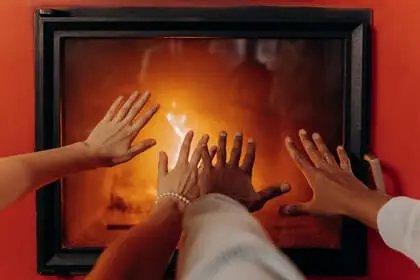If you have a radiator that is hot but the room around it is cold, there are many potential causes for this problem.
The first thing to consider is whether or not the heat in your house has been shut off for any reason. In this case, adding a portable electric heater will provide warmth quickly and efficiently.
If you are sure that your heating is on, check your thermostat. Check if it’s set too low. If the temperature on your thermostat matches the actual indoor air temperature then there may be an issue with something else in your homes like insulation or something might be blocking vents leading from the radiator to other rooms in your house.
If your thermostat is set to a temperature that seems appropriate, check the vents for any obstructions. This could be as simple as moving furniture or other objects away from them and cleaning out dust and debris before putting them back in place.

A blocked vent can also restrict how much hot air gets into your room which makes it feel cold even though the radiator itself isn’t working correctly. To fix this problem you may need to get an HVAC professional involved if there are exterior problems with hard-to-reach areas on your home like roofs where animals might have made their homes leading to clogged up vents.
You should never try fixing these kinds of issues by yourself because they can cause damage to both outside parts of your home and inside components with moving parts.
Why is the top of my radiator hot and the bottom cold
If the top of your radiator is hot and the bottom is cold, then it can be a sign that you have air pockets in your pipes that are preventing heat from moving through them correctly.
Air pockets can create uneven temperatures on both sides of the radiator which will make it more difficult to cool down your room.

To get rid of these air pockets, the first step is to shut off your radiator.
You can do this by turning a knob on a valve that attaches it directly to the pipe coming out of the floor or wall under your radiator. If you don’t have one already, you will need to install one as soon as possible because they allow for easy access if there are any issues with your system which could lead to leaks in pipes or other problems that may result in greater damage than just an uncomfortable space heater at night time.
After shutting off flow into the radiator, open each valve slowly. This will allow some steam through but not enough so that water is released all over everything around it.
As the steam rises out of the radiator, the hot water from the heating system will rise in the radiator. This will flush out any air pockets that may be present in your radiator system.
Once the line is clear, you can turn on your heat source and start enjoying a more evenly heated room whenever you need it!
Here are some additional tips to get started:
- If possible, avoid turning off hot water or electricity while working on heating systems.
- You should never try fixing these kinds of issues by yourself because they can cause damage to both outside parts of your home and inside components with moving parts.
- Check for air pockets in pipes which could lead to uneven temperatures as well as creating potential safety hazards from leaks if not repaired correctly.
- Use shut-off valves when performing maintenance work so that you don’t have to worry about hot water leaking out of your radiator.



